A major new exhibition in London explores architecture from the human angle. Ola Bednarczuk visits Sensing Spaces: Architecture Reimagined at the Royal Academy of Arts.
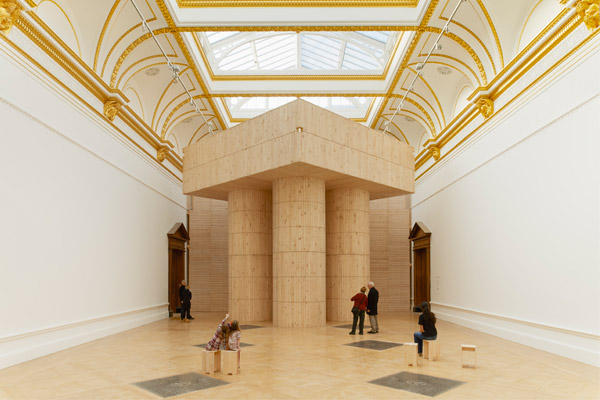
February 10th, 2014
Hero Image: Installation (Blue Pavilion) by Pezo von Ellrichshausen. Photography: James Harris.
Inviting seven contemporary architectural firms from six different countries into its ornate 19th century galleries, London’s Royal Academy has created an intriguing exhibition that encourages visitors to experience and appreciate the built environment through all their senses.
“Architecture is so often in the background to our lives. We don’t often think about it; we don’t think about what it does for us,” explains curator Kate Goodwin. “It’s practical, it’s functional, but when does it move beyond that and offer us something more?”
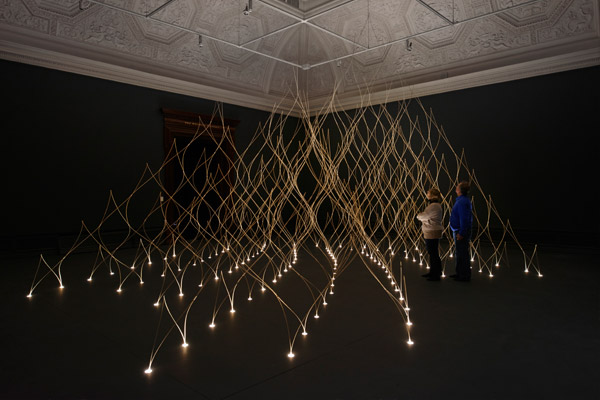
Installation by Kengo Kuma. Photography: James Harris.
In Sensing Spaces, the pieces serve no real practical purpose. With the gallery spaces as their context, their aim is to provoke emotion and reflection; to encourage visitors to experience each installation and consider its material, its movement, its light and space.
Portuguese architect Eduardo Souto de Moura offsets two large, ornate wooden doorways of the gallery with concrete equivalents positioned slightly off-kilter. Looking as if they have come unstuck, they bring attention to their material and form rather than serving as functional objects.
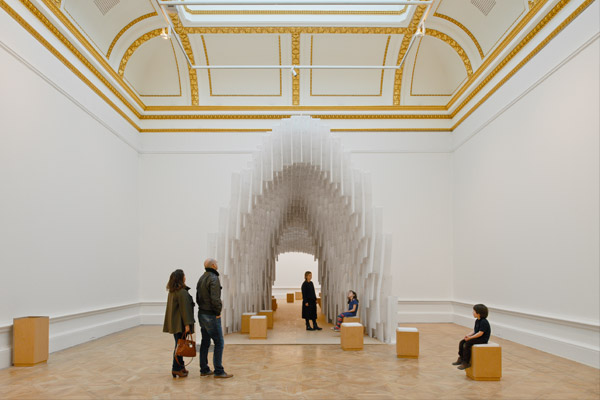
Installation by Diébédo Francis Kéré. Photography: James Harris.
A giant timber structure by Chilean architects Pezo von Ellrichshausen at first looks to be solid, but soon reveals a ramp and series of spiral staircases leading up to an open platform. Daylight floods in from a skylight overhead and visitors’ attentions are drawn to the beauty of the white ceilings, sculptural busts and gilted accents of the neoclassical gallery space. It’s not often that you find yourself in an exhibition standing on the artwork and admiring the gallery’s cornices.
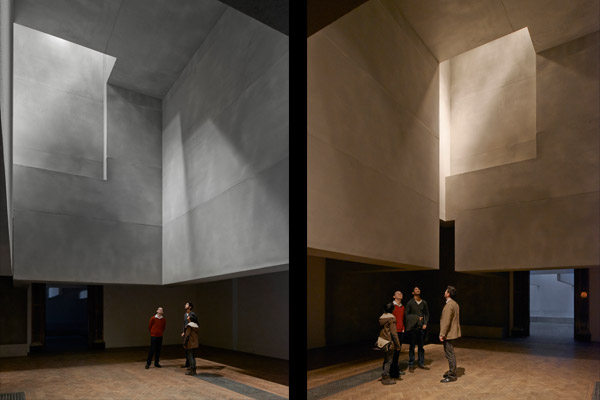
Installation by Shelley McNamara and Yvonne Farrell of Grafton Architects. Photography: James Harris.
Burkina Faso-born, Germany-based Diebedo Francis Kere’s igloo-like structure invites participation; visitors can add to the piece throughout the course of the exhibition with the help of thousands of coloured plastic straws. The idea is to engage people in the building process to create an emotional experience. Kengo Kuma’s offering is housed in two consecutive darkened rooms; thin, delicate lengths of scented bamboo, woven together and illuminated from the bottom, create an ethereal fragrant forest.
Irish practice Grafton Architects and Chinese architect Li Xiaodong play with light and darkness in their installations. Li leads visitors through a dark maze made of hazel sticks, illuminated from underfoot by stark white panels. The white light creates an eerie sensation, like walking through the woods at night. Grafton Architects’ installation, designed to invoke pleasure through a transition from light to dark, plays with ceiling height and volume in an evocative way. Large-scale forms above head height create various shadow and light effects that shift as visitors make their way through the gallery rooms.
Sensing Spaces is one of the largest architecture exhibitions the Academy has staged. The scale of the show is impressive – and the experience is a memorable one. Inviting visitors to take their time and reflect on their surroundings, it’s a reminder of the sensory qualities of the built environment and the power of spaces in evoking emotion.
Sensing Spaces: Architecture Reimagined is at the Royal Academy, London until 6 April 2014.
A searchable and comprehensive guide for specifying leading products and their suppliers
Keep up to date with the latest and greatest from our industry BFF's!

The Sub-Zero Wolf showrooms in Sydney and Melbourne provide a creative experience unlike any other. Now showcasing all-new product ranges, the showrooms present a unique perspective on the future of kitchens, homes and lifestyles.

Suitable for applications ranging from schools and retail outlets to computer rooms and X-ray suites, Palettone comes in two varieties and a choice of more than fifty colours.

Marylou Cafaro’s first trendjournal sparked a powerful, decades-long movement in joinery designs and finishes which eventually saw Australian design develop its independence and characteristic style. Now, polytec offers all-new insights into the future of Australian design.

Channelling the enchanting ambience of the Caffè Greco in Rome, Budapest’s historic Gerbeaud, and Grossi Florentino in Melbourne, Ross Didier’s new collection evokes the designer’s affinity for café experience, while delivering refined seating for contemporary hospitality interiors.
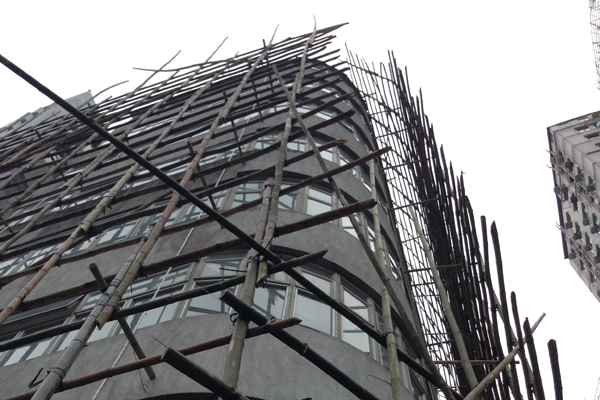
The collaborative duo behind the Australian-owned Kerry Phelan Design Office present a new firm located in central Hong Kong; a challenge met with ease and optimism. Text by Lara Smetannikov.
The internet never sleeps! Here's the stuff you might have missed

Simon Liley, Principal Sustainability Consultant at Cundall, writes about how cyberpunk dystopias haven’t (quite) come to pass yet – and how designers can avoid them.

Found within the verdant landscape of Jubilee Hills, Hyderabad, Sona Reddy’s design for this authentic Andhra restaurant adeptly fuses textural rhythms with traditional materials.